Has the world of antique glass bottles recently grabbed your interest? Perhaps you’re looking to expand your knowledge about the history and identification of glass bottles? if so, then you’ll be glad to know that you’re in the right place because we’ve got just what you’re looking for!
Collecting antique bottles has proved to be one of the most popular and fun trends among collectors and traders of the modern era. These glass bottles have been around for various centuries with each piece having a great deal of historical and cultural significance, making them incredibly valuable in today’s market. With thousands of antique bottles roaming around in the market, the identification of these glass bottles becomes essential for collectors looking to build their collection. They need to be fully aware of the history and origins of a particular glass bottle in order to decide whether or not it will be a good addition to their collection.
Various antique bottles have unique markings imprinted on them making it much simpler for collectors and traders to identify them and track their origins. These markings can help you identify products manufactured by a certain factory or brand; therefore, allowing you to acknowledge other essential details regarding the glass bottle, including its age, country, and rarity. Such details are significant in drawing a valid conclusion regarding the value of the liquor bottles.
In other circumstances, the solution might not be as simple as analyzing the markings at the bottom of the wine bottles. In such scenarios, you are recommended to look for other elements that may contribute to the identification of the glass bottle. Continue reading to get a complete insight into what steps you need to take in order to effectively identify any glass bottle in the market.
To be able to accurately identify the history and origins of a glass bottle, you need to be fully aware of the different kinds of labels and brandings, bottle makers, and the various techniques used in the production of antique bottles. Although this might seem a bit difficult for individuals with no prior knowledge of antique glass bottles, you don’t need to worry because we’re here to help! Fortunately for you, we’ve compiled everything you need to know about antique glass bottles in this guide. All you need to do is thoroughly read through and ensure that you understand each and every aspect of antique bottles essential for their identification.
With that said, let’s not waste any more time and get straight into the guide!
Table of Contents
Brief History Of Antique Glass Bottles
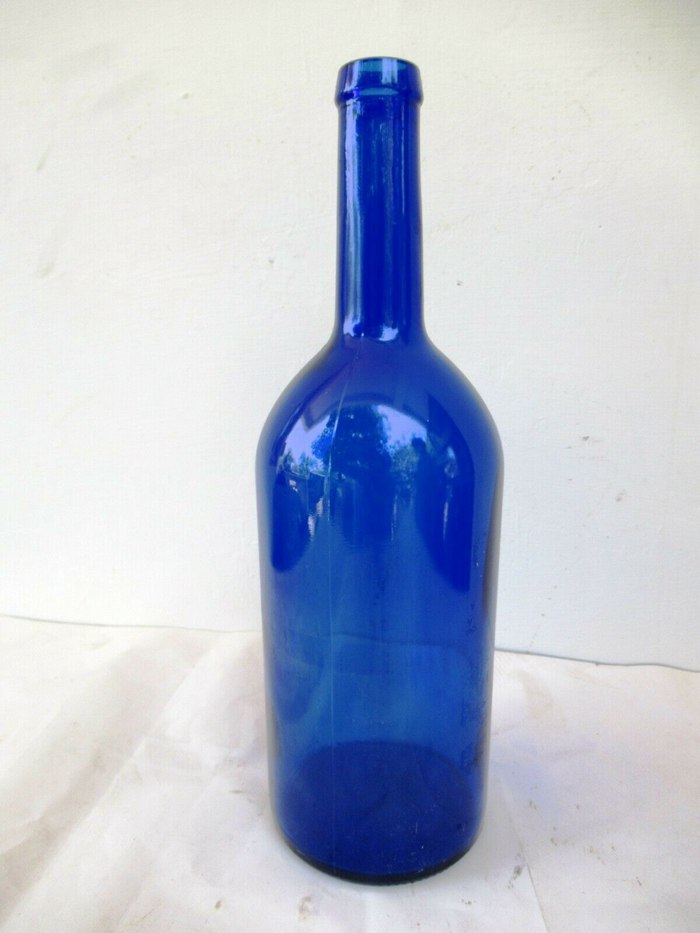
Being aware of the vast history of antique glass bottles will certainly help you fit into the antique bottles collection community more naturally. The concept of glass bottles dates back to pre-Roman times when they were primarily produced using traditional techniques involving wrapping a coil of molten glass around a shape made from mud and straw, which is eventually removed after the glass bottle cools down. Most bottles of these times were quite expensive and were mostly used for perfumes and oils.
Over the years, variations in the shapes and designs of glass bottles have been observed with the help of new and advanced technology. Eventually, machine-made bottles began entering the market, which was revolutionary in the history of antique bottles as, by this time, glass bottle production had significantly boosted and its popularity was growing all across the globe. Glass bottles began to serve various different purposes, the most popular of which were as liquor bottles, beer bottles, and soda bottles.
The early 19th century was the peak of glass bottle production as countless glass companies had joined in the trend and produced some of the rarest and most precious glass bottles that are highly valued in today’s market. Even today, the concept of glass bottles is widely accepted throughout the globe as new patterns and designs for liquor bottles, soda bottles, and wine bottles are being invented and released into the market for collectors to collect.
For a more in-depth understanding, be sure to check out this detailed Antique glass bottle guide on Amazon.
Different Ways For Glass Bottle Production
An important step in identifying antique glass bottles is being aware of the bottle’s age. When talking about determining the age of antique bottles, the first thing that comes to mind is being aware of the production method used in the manufacturing of a particular glass bottle. By methods of glass bottle production, we’re basically referring to the bottle-making process used by manufacturers to shape the glass in the form of a bottle.
From the mid-19th century to the early 20th century, mouth-blown bottles were in trend all across the globe; however, in the mid-20th century, glass bottles produced with this technique were almost completely substituted with machine-made bottles with the discovery of automation in the glass bottle production industry.
Mouth Blown Bottles
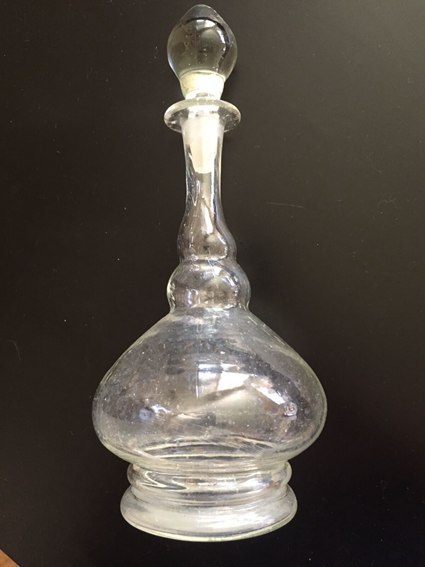
Mouth blowing proves the be the oldest and most popular technique in the production of glass bottles during the mid-19th century. Numerous bottle manufacturers all across the globe were known to have a skilled glass blower, who served an integral purpose in the bottle production process. The glass blowing consisted of carefully blowing molten glass into wood or iron molds shaped in the form of the bottle that needs to be manufactured.
The molten glass would then be left to cool down and solidify under normal room conditions. Following this, the artisan would apply some finishing touches, such as the bottle lip, to make the bottles and jars ready to be sold in the market. Bottle collectors of the modern era search for mouth-blown bottles to add to their collection primarily because of their historical importance and unparalleled value in the market.
Machine Made Bottles
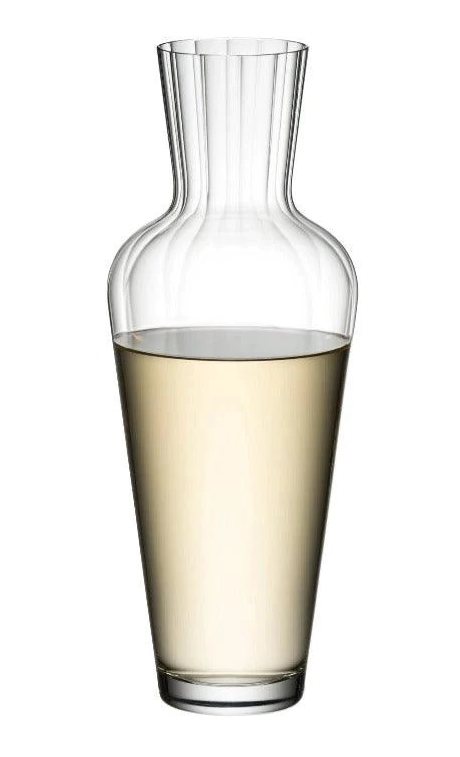
The massive world of glass bottle production changed for the better in 1892 with the invention of machine-made bottles, which quickly replaced mouth-blown bottles from the market. Although machine-made bottles prove to be less valuable to collectors and traders because of their easy availability, they are much more practical than older bottles utilizing traditional glass blowing techniques. By the mid-20th century, the Automatic Bottle Machine (AMB) was a necessity for all glass companies and bottle makers worldwide.
This Automatic Bottle Machine automatically molded the bottle’s lip as well as its body to significantly reduce the amount of labor relative to older production methods. Most bottle makers today continue to make use of more advanced variations of the Automatic Bottle Machine to produce unique and intriguing patterns, shapes, and designs; however, most bottle collectors prefer mouth-blown bottles over machine-made bottles primarily because of their rich history.
How To Read Markings On Antique Liquor Bottles?
Most antique bottles come with old glass bottle markings that play a significant role in helping you identify the glass bottle and determine how old or antique it might be. If you have encountered different types of antique glass bottles in the past, then you must’ve noticed various different markings and bottle effects that, although might seem insignificant at first, can have great importance in the world of old liquor bottles. Before trying to understand the significance of these glass bottle markings, you must understand that the meanings of certain markings can vary depending upon the type of glass bottle.
While most bottle makers embed their maker’s marks on the bottom of the bottle, there are various circumstances where certain bottle markings on the side of the glass bottle can have a much greater meaning than the former. You also need to know that the recommended method of reading and inspecting the glass bottle markings is fairly different for the various types of glass bottles that you might encounter in the market. Here are some of the most common types of antique glass bottle:
Clear Glass Bottles
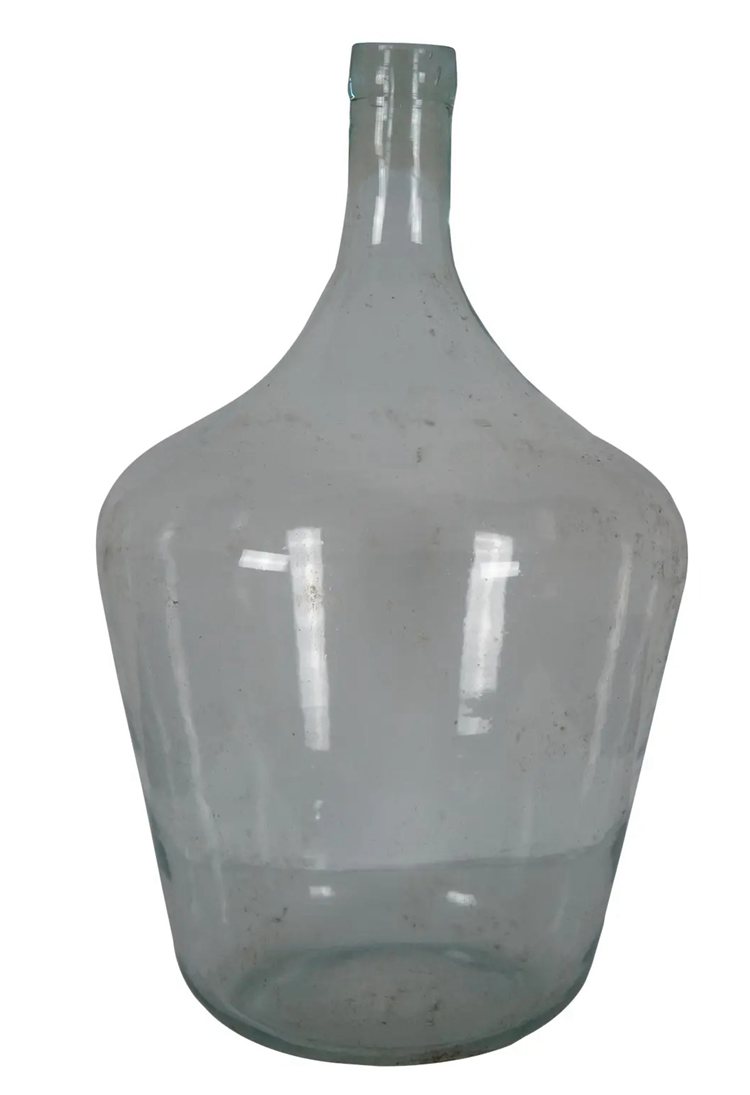
Colorless glass bottles, otherwise known as clear glass bottles weren’t as common before the 1870s because of their limited production and circulation by glass companies in different countries. These clear glass bottles became much more popular in the late 19th century when they were being used as liquor bottles, beer bottles, wine bottles, and soda bottles. Additionally, they also served other storage purposes, such as for perfumes and storing valuable oils.
Then, with the emergence of the Automatic Bottle Machine, the idea of clear glass bottles was further popularised as they became the primary glass containers officially used by liquor brands all over the globe to market their products. Unlike other types of glass bottles, most clear glass bottles with ground bottoms are identified on the basis of the glass bottle markings on their sides.
Embossed Glass Bottles
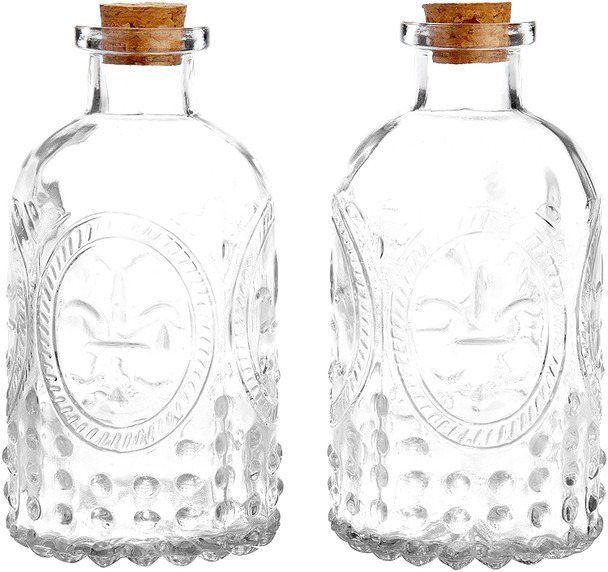
Embossed glass bottles are arguably some of the most common types of antique glass bottles available in the market. These bottles typically have a raised logo or image to hint toward the soda brand that they represent. Embossed glass bottles generally contain embossed marks on the side of the bottle, which give solid proof of the bottle’s age.
Additionally, most embossed marks are known to contain a number which helps you identify the bottling location for each glass bottle. Unlike other types of glass bottle markings, embossed marks don’t wear off over time, making it much easier for bottle collectors to effectively identify any embossed glass bottle.
In other circumstances, the embossing effects can also be used to determine the intended use of glass bottles. Certain glass manufacturers were known to emboss their company’s name on glass bottles for a certain period of time; therefore, allowing collectors to identify the time period when an antique glass bottle was manufactured to determine an accurate age of the piece solely on the basis of its bottle markings.
Colored Glass Bottles
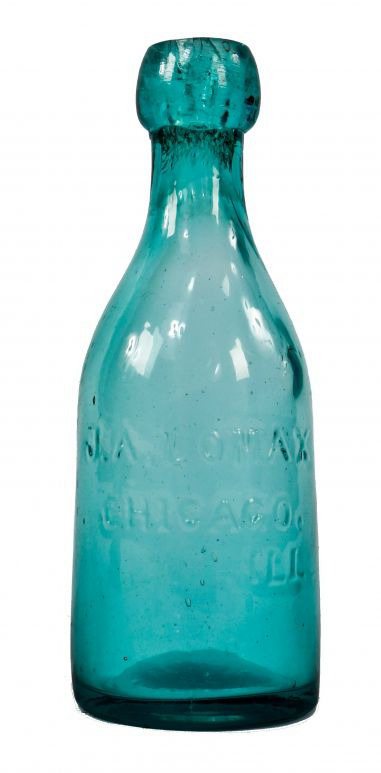
Over the years, antique glass bottles have been painted and tinted with various colors and designs, giving them unique appearances and eventually, raising their values in the market. Naturally, color is a significant factor that plays a major role in enhancing the visual appeal of the glass containers; however, on the contrary, it won’t help you while identifying old glass containers and trying to determine their age.
The glass color doesn’t hint towards any particular type of glass bottle. Moreover, it doesn’t have any relation with the production method used in the manufacture of an old bottle. Also, it cannot help you determine the purpose or function of the glass bottle that you’re trying to identify.
On the other hand, the glass color may help you approximate their age on the basis of estimated eras where certain glass colors were in popularity.
- Black glass – Early 17th century and mid-19th century
- Clear glass – Most popular around the 1870s
- Amber glass – Late 18th century and mid-20th century
- Purple/Red/Amethyst glass – Most popular from the 1840s to 1880s
- Aqua Glass –Most popular from the 1850s to 1890s
- Green glass – Mid-19th and early 20th century
- White glass – Most popular from the 1870s to the mid-20th century
How To Identify Valuable Old Glass Bottle Markings?
If you want to learn how to effectively identify and date antique glass bottles with ease, then you need to be aware of the different types of markings at the bottom of the bottle. Generally, there are two types of markings that you’ll come across during your time as a collector; stamped markings and embossed markings.
Stamped markings are a bit difficult to understand relative to embossed markings and required some experience and knowledge regarding the field. These marks provide essential information regarding a specific bottle, including when and where it was manufactured. On the other hand, embossed marks have significant meanings that say a lot about the history and contents of the bottle.
Being aware of the different types of markings is crucial when choosing to buy old glass bottles from an antique shop or from online stores, such as eBay and Etsy.
Embossed Marks
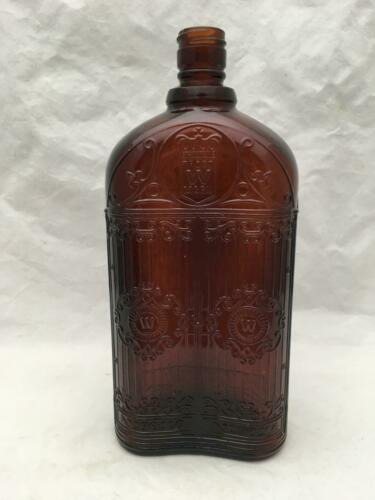
These types of markings were usually found on liquor beer bottles, wine bottles, and soda bottles and were used to hint towards the liquor or soda brand that distributed the product. In various circumstances, embossed marks would also provide information regarding the type of the bottle and where it was manufactured.
Most glass bottles with embossed marks can also be dated accurately with the help of a bottle bottom identification guide that enlists the origins and meanings of different types of embossed marks.
Mold Lines
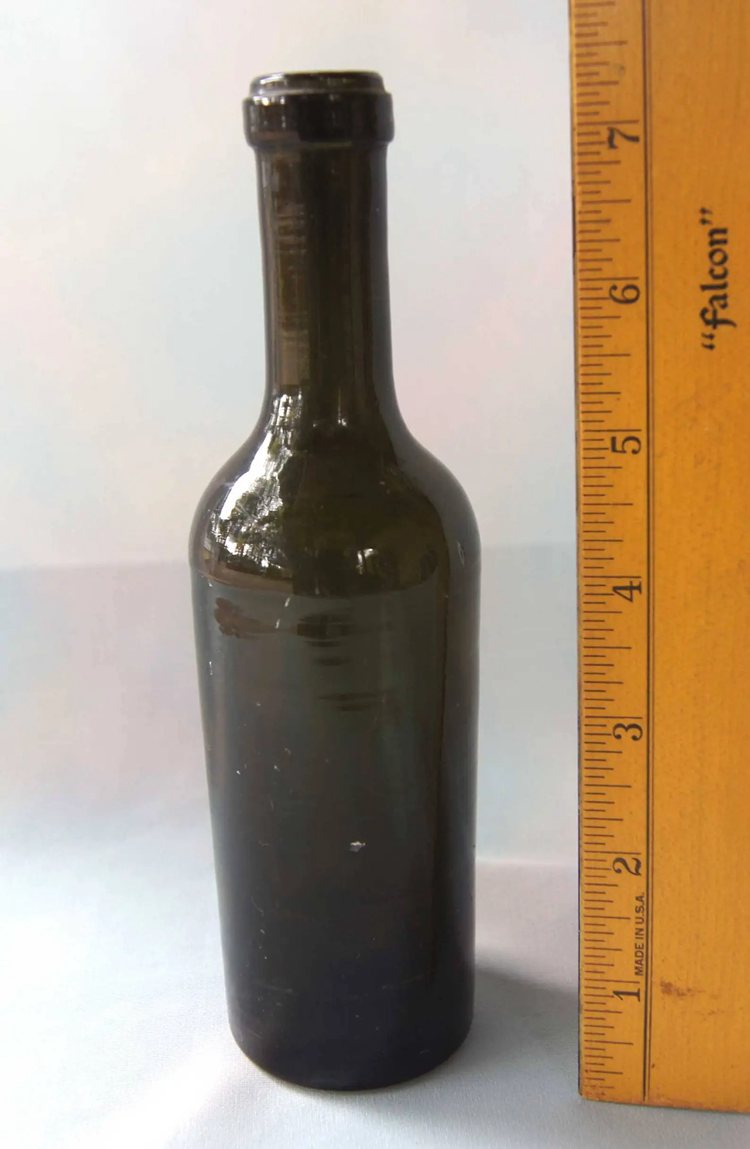
Mold lines are markings on the sides of glass bottles that appear after the glass is blown into a mold. These mold lines typically appear in the position where two pieces of glass meet and can be used to identify the production method used in the manufacturing of the glass bottle. If a specific bottle has mold lines on its sides, then it is likely to be hand-blown or made by an Automatic Bottle Machine.
During the manufacturing process, the glass molds have to undergo prominent and sudden pressure and temperature changes that cause tension, resulting in grooves and mold lines appearing on the surface of the glass wine bottles. Each set of mold lines is unique and needs to be inspected closely with the help of a magnifying glass to help collectors identify and date most glass bottles.
Pontil Marks
Pontil marks at the bottom of the bottle are small arrowheads that indicate where the glass bottle was attached by heated metal tongs during the production process. These marks can help collectors determine the production method used to manufacture an old bottle.
These pontil marks are made by driving a heated pontil road into the blob at one end of the bottle, leaving an impression on both sides of the glass. The technique is fairly difficult and requires great skill by the glass blower. Consequently, many bottles with pontil marks on their bottoms are likely to be valued high in the market.
Mold Seams
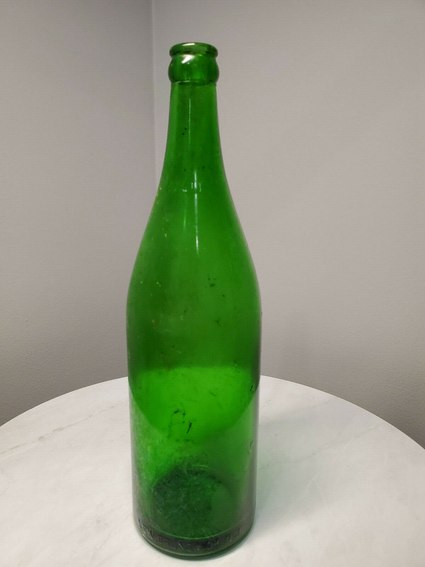
By the early 20th century, an increasing number of glass makers were using molds in the bottle production process. These molds typically left certain marks on the surface of the glass bottles, which can be used to identify the origins of old bottles and also determine their age.
Certain mold seams are incredibly small and insignificant, requiring you to make use of a magnifying glass to look for and identify these marks on old bottles. Bottles with mold seams are considered to be older than others, which implies that they are more antique and consequently, priced higher in the market.
Maker’s Marks
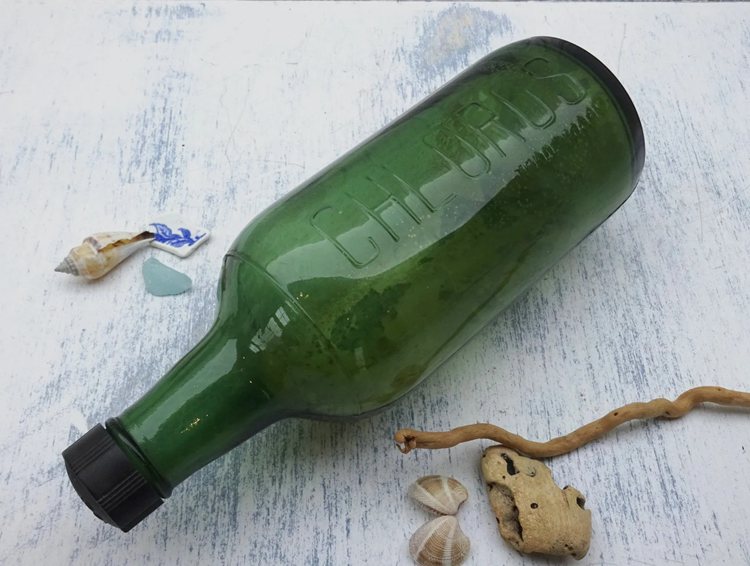
Certain well-known bottle manufacturers were known to embed their official logo or mark on their products to help collectors and traders identify their bottles at a first glance. These marks are typically present on bottle bases and play a major role in identifying old bottles. For example, the Illinois Glass Company were known to display G-numbers on the basis of their soda bottles. The numbers in their marks were typically used to indicate certain bottle shapes and designs, with each bottle having a unique number.
Another example is the New England Glass Co., which was known to have its NEG Co logo on bottles produced by their company. By including this copyright symbol on their products, they ensured no duplication or reproductions of their bottles in the market.
Being aware of the marks of different bottle manufacturers can make the process of identifying and dating old bottles much simpler and effortless for you. To further enhance your knowledge, you may check out antique glass bottle guide books and directories from libraries or by researching online.
Value Guide For Antique Glass Bottles
Before joining the community of antique glass bottle enthusiasts as a collector, you need to have an understanding of the prices of vintage bottles in the market. For a general idea, antique glass bottles can range anywhere from $30 to $90 and are available in yard sales, auctions, and antique shops. However, for a better collection of old glass bottles, be sure to check our online shopping sites, such as eBay and Etsy.
Here are some examples of vintage glass bottles found online.
- This ANTIQUE PATENT WHISKEY BOTTLE BLACK GLASS APPLIED TOP 11 3/8”sold for $39.99
- This ANTIQUE BLACK GLASS RUM/WHISKEY PONTIL BASE APPLIED LIPsold for $50.00
- This Antique Square Amber Glass Cork Top Bottle Embossed Peruvian Bitters Co. 9″ Tallsold for $85.00
Other rarer glass bottles may go up for several thousands of dollars, such as this MILK BOTTLE EMERALD GREEN GLASS GOLD SPOT DAIRY HALF GALLON OKLAHOMA sold for a whopping $1000.
Final Thoughts
Now that you know everything that you need in order to become an integral part of the antique bottle collectors community, what are you waiting for? Head over to your favorite online shopping site right now and get the vintage glass bottle that appeals to you most in order to start your very own collection.
If you have any questions or queries regarding today’s topic, be sure to let us know in the comment section below. We’re here to help!

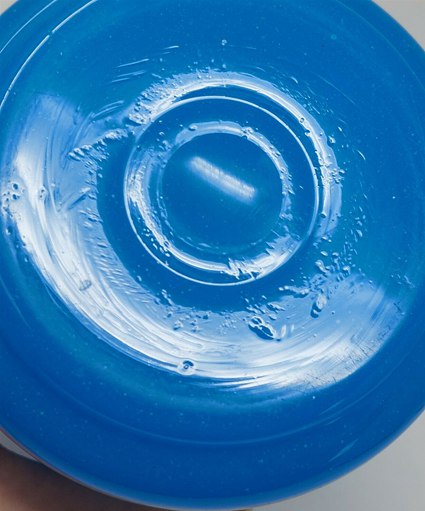




![Where To Sell Antique Furniture In 2022 [Ultimate Guide]](https://www.jacquelinestallone.com/wp-content/uploads/2022/09/Etsy-Your-Place-To-Buy-And-Sell-All-Things-Handmade-600x450.jpg)


